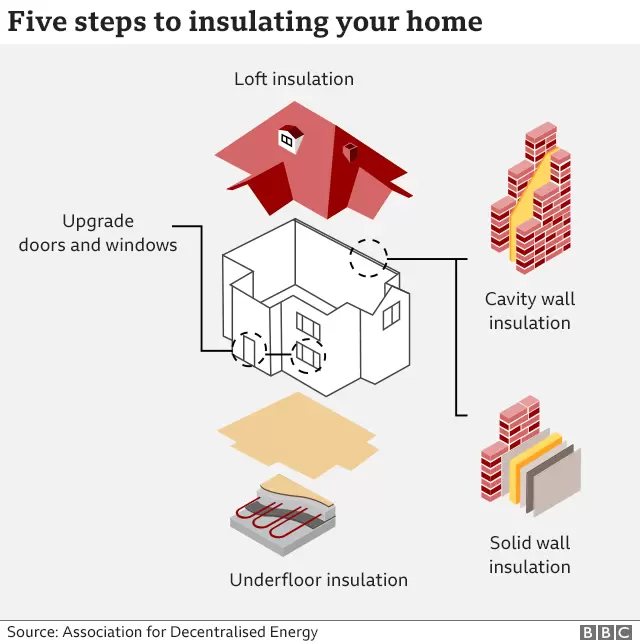While the Government consults on the Private Rented Sector’s decarbonisation, many landlords, 68% according to our own Landlord Leaders research last year, are already acting - or getting ready to act - to get ahead of legislation, update their properties, and create the best experiences for their tenants. Yet, as with many of the responsibilities that land on landlords shoulders, this is not as simple as pressing the play button and ending up with a house with sparkling green credentials.
It is clear why action is needed - with the UK property market accounting for nearly a quarter of our carbon emissions - but there is also the real pressure that increased energy bills have been putting on tenants that many landlords are equally keen to tackle. Beyond the works themselves (more on that to come), the key is in understanding the options upfront and of course the costs, any savings and environmental impact.
For landlords looking for answers, I’d recommend digging into the Lender’s Handbook on Green Home Retrofit and Technologies which has been created by a consortium of organisations and trade bodies, published through the Green Finance Institute (GFI). For brokers advising landlords, there is a version of the guide for you too. For those looking for more detail on EPCs, the Energy Saving Trust has a round up for landlords worth reviewing.
According to the GFI reports, there are three main ways to improve energy efficiency and EPC ratings. The first is installing individual technologies, such as energy-efficient LED lighting; the second is to pair complementary technologies, for maximum effect - for example installing both an air source heat pump and solar panels, to maximise energy generated onsite. Finally, and the reality for many landlords, is a whole house retrofit, which in many instances starts with a fabric-first assessment and approach to determine best long-term impact. For those looking for a full assessment, Building Renovation Plans (BRPs) can be a good idea.
But getting down to brass tacks, or indeed environmentally-friendly recycled ones, what are the options on the table for landlords? The GFI Building Renovation plans report neatly packages them into a four-step process with lots of facts and details about the costs, implications and benefits of each option.
Energy efficiency
The first step is to look to improve energy efficiency and that is done through loft and roof insulation; wall insulation; windows and doors; and floor insulation.

Source: https://www.bbc.co.uk/news/business-53365827
Cost / Benefit:
- Full loft insulation - cost £530, annual saving £2553
- Carbon savings 2,750 kg CO2e per year; Cavity wall insulation – average cost £1,100, annual saving £285
- Internal wall insulation - cost £8,500, annual saving £390
- External wall insulation - cost £12,000, annual saving £3905
- Carbon savings:
- Cavity 3,100 kg CO2e per year
- Int/Ext 4,200 kg CO2e per year
Low-carbon heating technologies
Next the key is to look at heating options - from air source heat pumps; to ground source heat pumps; to biomass; heat networks and district heating; and finally, heating controls.
Cost / Benefit:
- Air source heat pump installation cost typically £9,000 to £11,000
- Running costs often similar to gas heating, or lower with flexible tariffs and/or high energy efficiency
- Carbon savings of around 1,630 kg CO2e per year; Ground source heat pump installation cost typically £13,000 to £19,000
- Running costs often similar to gas heating, or lower with flexible tariffs/high energy efficiency
- Carbon savings of around 1,630 kg CO2e per year
Solar / solar storage
With the building insulated, and heating running efficiently, the next option is to look at maximising solar - across Solar PV: solar thermal; and of course, home batteries - which enable properties to store the electricity generated on sunny days for when it is needed at other points.
Cost / Benefit:
- £3,000 - £6,000 for a typical solar PV or thermal system (for a residential PV system, this would be around 3 – 5 kW)
- £3,000 - £5,000 for a battery connected to a PV system, depending on its size
- Payback times can be less than 10 years
- Carbon savings 820 kg CO2e per year.
Climate resilience
Finally, there are options to manage a property’s resilience to climate change - such as flooding or extreme temperatures - through technologies including green roofs; passive cooling measures; Property Flood Resilience (PFR); relocating appliances and electricals; and solar shading.
In many instances, guides like the GFI one look at payback periods for the interventions - which when tenants are usually paying the bills is not so straightforward. For landlords, the cost benefit requires greater scrutiny and calculation - taking into account everything from tenant affordability and rent to the implications of the draft legislation should it come in.
For now we know the majority of professional landlords are financing their energy efficiency upgrades as part of their everyday budgets, but as increasing numbers of landlords move to action, we can expect to see more innovation from banks and lenders to support the change.
This article first appeared on Mortgage Solutions website.
 By :
By : 
Comments
Complete the form on this page to submit your comment, and register your interest in the Landlord Leaders Community.